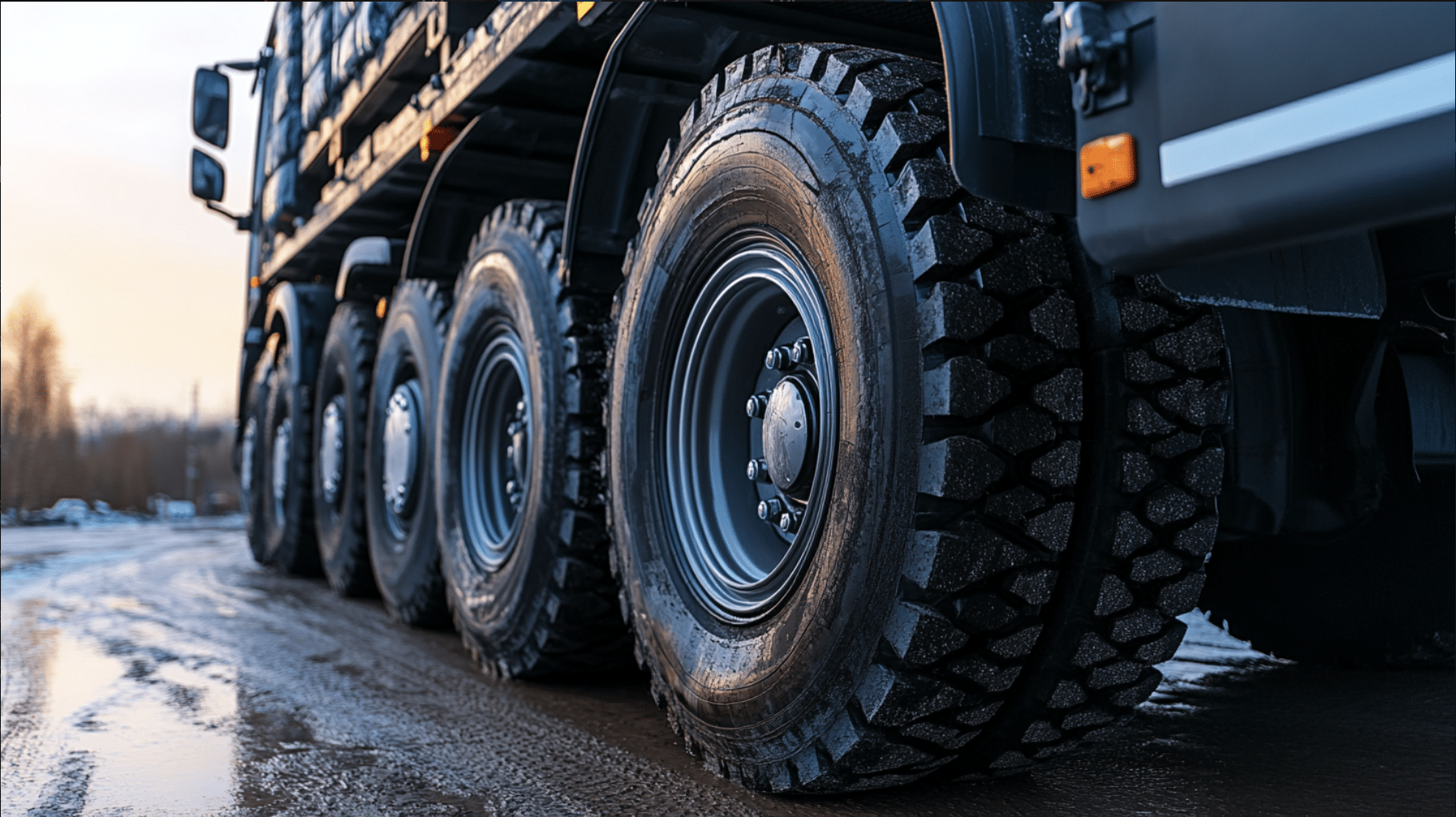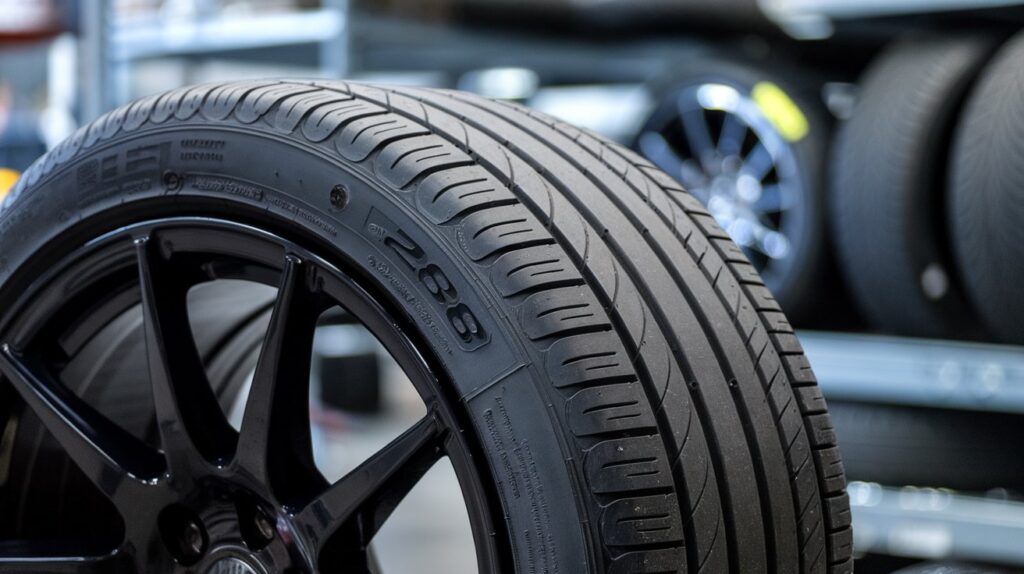Choosing the right tire size can be puzzling for many vehicle owners.
You might wonder, “What size tire is 285?” and whether it’s the right fit for your car or truck.
The 285 tire size, measuring 285 millimeters in width, offers unique advantages but has potential drawbacks.
Don’t worry—we’ve got you covered. This article will help you understand the ins and outs of 285 tires so you can make an informed decision about your vehicle.
We’ll explore the key benefits of 285 tires, such as improved traction and stability, as well as possible downsides, such as fuel efficiency impacts.
By the end of this post, you’ll have a clear picture of whether 285 tires are the right choice for your driving needs and vehicle type.
What Size Tire is 285?

Understanding tire sizes can be tricky, but it’s crucial for making the right choice for your vehicle. Let’s break down what “285” means in tire terminology.
- The number 285 in a tire size refers to its width in millimeters.
- A 285 tire has a width of 285 millimeters, measured from sidewall to sidewall.
- This size is often seen on trucks, SUVs, and high-performance vehicles.
- The width of 285 tires contributes to better traction, stability, and load-carrying ability, making them suitable for off-road driving and heavy-duty uses.
285 tires work well with various vehicles, particularly larger ones like trucks and SUVs.However, checking if your vehicle can handle these wider tires without issues is vital.
Some vehicles come with 285 tires as standard equipment, while others might need adjustments for proper fitting.
Refer to your vehicle’s manual or seek expert advice before switching to 285 tires.
Why 285 Tires are Popular?
Off-road enthusiasts often prefer 285 tires because they provide excellent grip on tough terrains.
The wider footprint helps prevent slipping and improves navigation in challenging conditions.
Performance drivers also appreciate 285 tires for their enhanced handling and stability, especially during high-speed driving and cornering.
While 285 tires offer many benefits, they may impact fuel efficiency due to increased rolling resistance.
It’s also crucial to ensure your vehicle can accommodate this size without rubbing or requiring major modifications.
If you’re unsure, it’s best to get a professional assessment before switching to 285 tires.
Choosing the right tire size is crucial for your vehicle’s performance and driving experience.
285-size tires offer several advantages, particularly for certain types of vehicles and driving conditions.
However, they also come with potential drawbacks that need consideration.
This section examines the key benefits of 285 tires to help you understand how they might enhance your vehicle’s capabilities.
Benefits of 285 Tire Size

1. Enhanced Traction and Stability
- 285 tires provide superior grip across various surfaces, which is particularly noticeable in off-road situations.
- Their wider footprint allows for better contact with the ground, improving overall traction.
- This increased surface area also enhances your vehicle’s ability to handle corners effectively.
- Whether you’re navigating a winding road or tackling an off-road trail, the improved stability can give you more confidence behind the wheel.
2. Aesthetic Appeal
- Many vehicle owners choose 285 tires for their visual impact.
- The wider profile gives trucks and SUVs a more imposing and sporty look.
- This can be especially appealing if you want your vehicle to stand out or if you’re aiming for a more rugged appearance.
- The beefier look of 285 tires can transform the overall aesthetic of your vehicle, making it appear more powerful and ready for action.
3. Increased Load Capacity
- One practical advantage of 285 tires is their ability to handle heavier loads.
- This makes them an excellent choice for vehicles that frequently carry substantial weight or are used for towing.
- The increased load capacity can be particularly beneficial for work trucks or SUVs used for hauling trailers or equipment.
- With 285 tires, you can often carry more weight with greater safety and stability.
4. Better Off-Road Performance
- For those who enjoy venturing off the beaten path, 285 tires offer significant benefits.
- Their wider tread provides better traction on loose or uneven surfaces, helping you navigate challenging terrains with greater ease.
- The increased durability of these tires also means they can withstand the rigors of off-road driving, including impacts from rocks and other obstacles.
- This makes them ideal for adventure seekers who need reliable performance in rugged conditions.
5. Higher Cornering Capabilities
- In high-speed driving scenarios, 285 tires can significantly enhance your vehicle’s performance.
- The wider contact patch allows for improved grip during cornering, which can be especially noticeable when taking turns at higher speeds.
- This can result in a more responsive and controlled driving experience, particularly for performance-oriented vehicles or drivers who enjoy a more dynamic driving style.
Drawbacks of 285 Tire Size

1. Potential Fitment Issues
- One of the main challenges with 285 tires is ensuring they fit properly on your vehicle.
- In some cases, you might need to make changes to your vehicle to prevent the tires from rubbing against wheel wells or suspension parts.
- This could involve lifting the vehicle, adjusting the suspension, or modifying the body.
- Before switching to 285 tires, it’s crucial to check if your vehicle can accommodate them without extensive modifications.
2. Reduced Fuel Efficiency
- The wider profile of 285 tires can lead to increased rolling resistance.
- This means your vehicle needs to work harder to move, which can result in higher fuel consumption.
- If fuel economy is a top priority for you, the potential decrease in miles per gallon with 285 tires is an important factor to consider.
3. Higher Cost
- 285 tires typically come with a higher price tag compared to narrower options.
- This increased cost applies not only to the initial purchase but also to long-term maintenance and replacement.
- The larger size often means more material is used in manufacturing, contributing to the higher price.
- Additionally, if your vehicle requires modifications to fit these tires, that adds to the overall cost.
4. Speedometer Inaccuracy
- Switching to 285 tires can affect your vehicle’s speedometer readings.
- The larger diameter may cause your speedometer to show a lower speed than you’re actually traveling.
- This discrepancy can be significant enough to require recalibration of your vehicle’s speedometer to ensure accuracy.
- Driving with an inaccurate speedometer can lead to unintentional speeding or other safety issues.
5. Heavier Steering
- The increased width of 285 tires can make steering feel heavier, especially at lower speeds.
- This change in steering feel may not be comfortable for all drivers and could take some getting used to.
- The extra effort required for steering can be particularly noticeable during parking or navigating tight spaces.
- Some drivers may find this change in handling characteristics undesirable, especially if they’re used to more responsive steering.
Cost Considerations of 285 Tire Size
When considering 285 tires for your vehicle, it’s important to understand the financial implications of this choice.
This section delves into the various cost factors associated with 285 tires, including initial purchase prices, long-term value, and market availability.
By examining these aspects, you’ll be better equipped to decide if the investment in 285 tires aligns with your budget and driving needs.
1. Initial Costs
When comparing 285 tires to other sizes, you’ll generally find that they come with a higher price tag. This is due to several factors:
- Material usage: The wider profile of 285 tires requires more rubber and other materials in their construction.
- Manufacturing complexity: Producing larger tires often involves more complex processes.
- Brand and quality variations: Like all tire sizes, 285 tires vary in price based on the manufacturer and quality level.
For example, a set of four 285 tires might cost between $600 to $1,200 or more, depending on the brand and specific model. In contrast, a set of narrower tires, such as 265 or 275, could be $100 to $300 less expensive.
2. Long-Term Value
While 285 tires may have a higher upfront cost, it’s essential to consider their long-term value:
- Durability: Many 285 tires are built for tougher conditions, which can translate to longer tread life.
- Performance benefits: The improved traction and stability might justify the extra cost for some drivers, especially those who frequently drive off-road or in challenging conditions.
- Replacement frequency: If 285 tires last longer due to their construction, you might need to replace them less often, potentially saving money over time.
Conclusion
Choosing the right tire size is essential for your vehicle’s performance and safety.
So, is a 285 tire size right for you? Consider your driving habits, vehicle type, and performance needs.
These wider tires offer better traction and stability, especially for off-road enthusiasts and those seeking improved handling.
However, they may impact fuel efficiency and require vehicle modifications.
Before making a decision, consult your vehicle’s manual or speak with a tire professional.
They can help you determine if 285 tires are compatible with your vehicle and align with your driving requirements.
Remember, the best tire choice balances performance, safety, and cost.
Whether you opt for 285 tires or another size, ensure it meets your specific needs and enhances your driving experience.
Make an informed decision to get the most out of your vehicle.
Frequently Asked Questions
What Is a 285 Size Tire Equivalent To?
A 285 tire is roughly equivalent to a 33-inch tire in diameter. The exact comparison depends on the tire’s aspect ratio and wheel size.
What Is the Best Wheel Width for a 285 Tire?
The best wheel width for a 285 tire is typically between 8 and 9.5 inches. This range provides good tire performance and safety. Always check your vehicle’s specifications and consult a tire professional.
How Much Bigger Is a 285 than a 275?
A 285 tire is 10 millimeters (about 0.4 inches) wider than a 275 tire. This small difference can affect handling, traction, and fuel efficiency.

